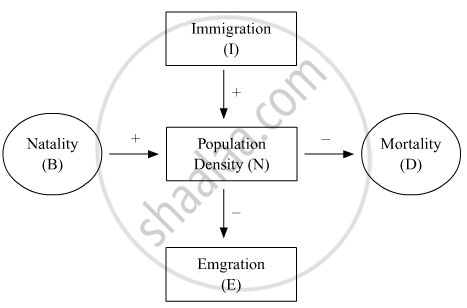Advertisements
Advertisements
प्रश्न
The number of lily plants in a pond was found to be 50. After one year, the number. increased to 65. Calculate the natality of lily plants.
उत्तर
Given that the initial number of lily plants was 50 and increased to 65 after one year, the population increase is 65 − 50 = 15 plants. The time period is 1 year. So, the calculation is:
`"Natality Rate" = "Increase in Population"/"Original Population" × "Time Period"`
`"Natality Rate" = 15/50 × 1`
`"Natality Rate" = 15/50`
`"Natality Rate" = 0.3`
This means the pond's lily plants have a natality rate of 0.3 per plant per year.
APPEARS IN
संबंधित प्रश्न
(a) Name the two growth models that represent population growth and draw the respective growth curves they represent.
(b) State the basics for the difference in the shape of these curves
(c) Which one of the curves represents the human population growth at present? Do you think such a curve is sustainable? Give reason in support of your answer.
How does an age pyramid for human population at given point of time helps the policy-makers in planning for future.
Answer the following question.
What is "population" according to you as a biology student?
Study the flow chart given below and complete the equation that follows by identifying 1, 2, 3 and 4.

Nt + 1 = Nt + {(1+ 2) − (3 + 4)}
Animals that can move from fresh water to sea called as ________.
Measures of ‘Central tendency’ refer to:
Population having large number of postreproductive and small number of prereproductive age group is called
`"dN"/"dt" = "rN" (("K"- "N")/"K")` in logistic growth "K" represents:
Which one of the following organisms reproduces sexually only once in its lifetime?
The density of a population in a habitat per unit area is measured in different units. Write the unit of measurement against the following:
Deer
